Folders |
A Match For Max - A Middle School Runner's Rally From A Life-Threatening IllnessPublished by
A Match for Max
A DyeStat story by Dave Devine ______________
We’ll begin here: a middle school party in the suburbs of Chicago. It’s a Saturday in early December, maybe a dozen kids milling around, lounging on the furniture, tweens and teens, a flat screen TV. Junior high jokes and video game debates. Snacks provided by the host parents — Max and Abby Lewis’ mom and dad. Pizza, fries, breadsticks. Fuel for adolescent hunger. There’s no awkward slow dancing, no weird social vibes, no lonely kid in the corner playing DJ on a commandeered laptop — it’s not that kind of middle school party. This is a bunch of friends from the cross country team, gathered in the early afternoon to watch a pair of high school championship races unfold on a course 2,000 miles away in Portland, Oregon. The 2019 Nike Cross Nationals, streaming to a screen in Barrington, Illinois. Both fields are littered with teams and individuals from the outskirts of Chicago — Josh Methner, a co-favorite in the boys race, runs for Hersey High only 10 miles from here; Katelynne Hart, one of the top female contenders, hails from Glenbard West, 25 miles south — but most of the kids in the room are pulling for Nico Young of California and Katelyn Tuohy of New York. That’s because their coach, Jim Bartlett, who also happens to be their history teacher, has done what any shrewd educator would do in this situation: generated a worksheet to keep the kids engaged in the video being shown. Bartlett, a self-professed “track nerd,” has partnered with host dad Nate Lewis, also a big fan of the sport, to create an NXN prediction contest. Every kid has a list of questions, ranging from race winners to opening mile splits, top Illinois finishers to winning team uniform colors. Next to each prediction, they’ve been told to rate, on a scale from 1 to 20, their confidence in the pick. Thought Tuohy would win? And you had a “confidence” of 17 in that pick? Congrats, that’s 17 points for you. Add ‘em up, high score wins. And there are Jimmy John’s sandwiches on the line, so you better believe these middle schoolers are engaged. With every surge in the lead pack, every team score updated on the broadcast, the room erupts with screams of elation or despair. Let’s gooooo, Manlius! C’mon, Nico! It’s clear, according to Bartlett, that Nate’s expertise has influenced a sizable segment of the team. “Most of them probably would have been cheering for Methner,” Bartlett says, “but Mr. Lewis was pretty convinced that Nico Young was going to win, so they all put him down.” But not Nate’s son, Max. An eighth grader just finishing his first cross country season, Max stuck with local boy Methner, and he’s all in. Methner’s still got a shot! You’re crazy — Nico’s running away with it. As the races evolve, as the energy rises to a frenzy, it’s easy to be dragged into the Portland storylines. To rally for the favorites or root for the long shots. Become captivated by the odds that some of these runners had to overcome just to be there at NXN. But it’s unlikely that anyone racing in Portland overcame longer odds than Max Lewis did, just to be watching here in Barrington. The same Max who’s glancing nervously at his NXN prediction sheet now, hoping for a couple matches. Three years ago, he had to find the most improbable match of all. A perfect genetic match, from someone outside his family. A person who not only met every necessary genetic marker, but would be willing to donate his or her healthy bone marrow to replace the failing marrow inside Max’s body. What were the odds of that happening? A thousand to one? A million? It’s hard to say, there were so many factors to consider, but the odds were certainly longer than anything happening on that drenched race course in Portland. Not the odds of winning a race. Or a sandwich from Jimmy John’s. The odds for Max to simply be here. * * * The early signs were so subtle, they were barely signs at all. Here was an 11-year-old boy, a rambunctious kid playing soccer and basketball. Crashing into teammates, hard fouls and clumsy falls. Bruises and bloody noses were par for the course, right? For a while, Max’s parents thought so. But these were different. The bruises took forever to fade. The bloody noses dripped for hours. “I noticed it,” Max says now, “I thought there might be something wrong.” But the first real indication came at Max’s annual physical in August 2016, just before the start of fifth grade. His pediatrician scowled at something unexpected for an otherwise healthy, growing boy. “He hadn’t gained any weight in a year,” Max’s mom, Lisa, says. “His doctor told us, ‘Let’s give it three months, and then check in again.’ But he didn’t gain any weight in those three months, either, so we went in for bloodwork.” There were additional appointments, more blood draws, until Max’s pediatrician eventually discovered that his blood platelet level was remarkably low. Among the specialized blood cells — red, white and platelet — the platelets are the cells that form clots when the body is injured, helping to stem the flow of blood. Suddenly, those lingering bruises and persistent bloody noses made sense. Nate and Lisa were urged to take Max to Lurie Children’s Hospital in downtown Chicago, about 40 miles from their Barrington home, for additional testing. Same result: low platelet count. The doctors ordered a bone marrow biopsy. “Right then and there,” Lisa says, “they could tell us that it wasn’t leukemia, so we knew that much. But we didn’t know what it was.” In early December, Max received a definitive diagnosis. Something no one in the Lewis family had ever heard of: Aplastic anemia. It’s a rare, life-threatening disease in which the bone marrow, the spongey tissue inside bones that generates the blood supply, stops producing sufficient blood cells — of all three types — to meet the body’s needs. The diagnosis meant Max would need to travel into Chicago every week for platelet transfusions, and occasionally, a full blood transfusion. In the long term, the family was offered a variety of treatment options. Only one of those options offered the promise of a cure and a return to relative normalcy. A bone marrow transplant from a matching donor. They immediately decided to pursue that option. The first step was for Max’s immediate family to complete a cheek swab. Lisa and Nate knew it was unlikely they’d be compatible; as Max’s biological parents, each had contributed only half of their son’s genetic material. But they held out hope that Max’s younger sister, Abby, would be the match he needed. When the results came back, it was another setback. “You sort of assume,” Lisa says, “that someone in the family is going to be a match, and nobody was.” Next step: turn to an international registry of potential donors. “At that point,” Lisa says, “all you can do is hope there’s a match out there…somewhere in the world.” * * *
There wasn’t much of a chance — Dylan Wood remembers that much. Nearly four years after sitting through a Be The Match informational session, the details of which have grown understandably fuzzy, one thing Dylan remembers clearly is an assurance from the bone marrow registry’s speaker that it was unlikely anyone in the room would be called upon as a donor. “They really told us that there was little chance, statistically, that you’d be the match for someone,” Dylan recalls. He was a 19-year-old freshman then, recently arrived at the University of Mount Union in northeastern Ohio, trying to scratch out a role as cornerback on one of the most successful football teams in NCAA Division 3 history. When the head coach asked his squad to help galvanize a campus-wide initiative to gather bone marrow registrants, Wood was keen to assist. “The whole team signed up,” he says, “and then we tried to branch out as much as we could to the rest of campus.” Joining the registry wasn’t complicated, a minor inconvenience for a college student. An on-line registration. A cotton swab and a pre-addressed envelope. Echoing in his mind the entire time was the assurance from that presentation: Statistically, very little chance. So, he was stunned, less than a year later, when the organization reached out. “I got a phone call saying I was a match for a little boy.” In fact, that initial call informed him that he was a potential match — further blood testing was needed, assuming Dylan was open to that possibility. He was, and when those results came back, they were even more promising. Dylan Wood, small college cornerback, was a perfect match. Not a partial match. Not the best they could do under the circumstances. Perfect. “That kind of blew my mind,” he says. “They told me they tested his family, and I was the one that was a perfect genetic match. That we were identical twins on the inside…it’s a little crazy to think about, to be honest.” Dylan, who grew up in southeastern Ohio — “a pretty rural part of the state,” he says — now had a decision to make. He was asked if he’d be willing to donate stem cells from his bone marrow to save a gravely ill boy. “I tried to put myself in his parents’ shoes,” he says. “What would you want someone else to do if it was your child?” He pauses a moment, letting the weight of that question settle. The way a small choice might rescue or unravel a life. “It was a no-brainer.” Lisa still marvels at the generosity of that decision. The empathy a 19-year old summoned for her son. For her and Nate. “That’s something we will always be grateful for,” she says. On April 5, 2017, Max was waiting in his Chicago hospital room while Dylan checked into a facility near his Ohio college and underwent surgery to extract his marrow. Prepared for the possibility it might be more complicated, Dylan found his end of the procedure to be relatively simple. “They told me there might be pain,” he says, “but I walked out of the hospital just fine.” For Max, the recovery was significantly more arduous. He’d actually checked into Lurie 10 days earlier to undergo rounds of chemotherapy and radiation aimed at destroying all of his original bone marrow. “We went into it very positive,” Lisa says, “got him checked in, but once he started getting all of these drugs and chemo — obviously, as a fifth grader, he didn’t really know what it all meant, but he was so weak.” After the transfusion of Dylan’s healthy cells, Max faced another month in the hospital as doctors closely monitored his condition, vigilant for signs of rejection. Severely immunosuppressed, Max spent much of that time in isolation. When nurses circulated to ask if there were any toys or games he’d like to request, his answer was almost always the same: Legos. The hospital delivered a steady supply. “The Legos helped me a lot,” he recalls. “I’d just build them and focus on that, not worrying about everything going on around me.” Even though he’d rally for a virtual appearance in his fifth-grade classroom via Google Hangout, or meticulously assemble complicated Lego sets, Lisa could see the toll the treatment was taking on her son. “It’s not easy,” she says, “to watch your kid, who was vibrant and running all over the soccer field, not be able to do that anymore.” Some days, she and Nate struggled to imagine how Max would ever make it out of that hospital bed. Ever return to the energetic boy they’d known. They also never stopped thinking about the other boy, the one who’d signed up with his football team so many months earlier. “There’s no doubt, Dylan saved Max’s life.” Lisa says, emphatically. Three years later, Dylan shakes his head at the enormity of that — a boy saved. “It’s still crazy for me to think about,” he says. “I do believe there’s a reason we were matched.”
* * * It was a simple assignment for seventh grade history. Make a timeline of your life. Jim Bartlett, the history teacher and cross country coach at Prairie Middle, had seen plenty of them over the years. It was one of his go-to assignments. So, in the fall of 2018, when that year’s students started bringing in their projects, he was expecting more of the same. And that’s pretty much what he got. Except for the timeline Max Lewis submitted. “Most kids did theirs on a single sheet of paper,” Bartlett says, “but Max, he came in with this really long one.” A series of taped-together pages that kept unfurling. “I would say it was, legit — four feet long. I started reading all the things he’d gone through, and I was just blown away.” Bartlett read about the aplastic anemia and the bone marrow transplant and the hospitalization. He saw an entry about Max requesting a wish from the Make-A-Wish Foundation, something he knew was reserved for children with life-threatening illnesses. “For a kid to go through that much…” Bartlett says, voice trailing off. He was familiar with Max from outdoor track the previous spring, when Max was a sixth grader. He mostly knew him then as an aspiring soccer player, and, until that timeline project, knew nothing of the health struggles. He also didn’t know that Max’s father, Nate, had been a Division 3 All-American in cross country and track at Calvin College in the 1990s. “It does sort of run in the family,” Lisa says, “but Nate never really pushed it. After Max got sick, and he was starting to feel better, running came about because Mr. Bartlett was Max’s teacher.” Max was drawn to Bartlett’s passion for the sport. “He’s really good at what he’s doing,” Max says. “He makes everything fun, no matter how hard it is.” It was too late for cross country at that point, but Bartlett convinced Max to begin running that winter, and began coaching him again in the spring. The outdoor season opened to middling results, and then Max made a breakthrough “We had this Palatine Distance Night,” Bartlett says, “where he ripped off a five-twentysomething mile, and it was like, ‘Holy cow, he’s actually pretty good.’” Max committed to cross country for eighth grade, letting go of soccer, and attended a summer running camp at Barrington High where Bartlett was a counselor. “I’ll never forget,” the coach recalls, “we were doing this interval workout in the summer that was just tough. And he beat our fastest kid. It set the example that he was there to work.” Once cross country started, Max revealed another aspect of his personality. On the first day of practice, the coaches decided they would ask each student to fist-bump or high-five a coach at least once during the day. They wanted every runner on the team to feel seen; to instill a culture of connection that would bond each athlete to the greater whole. But like so many well-intentioned proposals initiated on a team’s opening day, the fist-bump was soon lost in the shuffle of successive practices. Everyone — coaches, runners, parents at pick-up time — forgot the plan. Everyone except Max. "By the second week,” Bartlett says, “we’d all forgotten it. But Max continued to keep coming up, keep coming up…shaking every coach’s hand, every day. It got to the point where more kids started doing it again on their own, until eventually the whole team was doing it. Following Max’s leadership.” Max wasn’t the top runner on the team this season, or the most outspoken, Bartlett says, but he emerged as an undisputed leader. “He’s the ultimate lead-by-example type person.” When Max’s younger sister, Abby, now a sixth grader, was on the fence about joining the team, it was Max who encouraged her, sticking by her side during a team scavenger hunt even though it meant he wouldn’t win. She stuck with it, too, and now Abby — who was born deaf and wears cochlear implants — has a chance to crack the top seven next fall. Besides his knack for quiet leadership, Max contributed one of the truly indelible moments to the 2019 Prairie campaign. At the October sectional meet, he was determined to defeat a rival he’d been back and forth with all season. “We’d faced each other in a lot of races,” Max says. “There was a race before where I outkicked him, but just barely. This one, I really did not want to lose to him.” On an inundated course that was re-routed due to flooding, Max and his rival hit the final straight in a dead heat. The finish line was already a mud pit. Bartlett picks up the race call: “That kid had him beat — by a lot — coming down the stretch,” the coach says. “I figured at that point, well, 10th is still pretty good. But Max fought back, rebounded, and dove across the line to make sure he got that point…he literally dove into a puddle of mud and came up so excited, not just because he beat the kid, but because he gave it his all.”
Prairie won that sectional meet and advanced to state, where the boys finished sixth. Max ran as the number three man. If track was his introduction to running, cross country has emerged as his favorite season. “It’s relaxing for me,” he says. “It really helps me think.” His parents love what running has done for their son, too. “Running gave him confidence to just go out there and do it again,” Lisa says. “It’s not something we can help him with, it’s something he has to do. And after everything he’s been through —” She pauses, and in that wedge of silence is a boy in a hospital bed. A tangle of tubes and IV drips. Monitors and medicine. “There were days upon days in the hospital,” Lisa says, her voice lowering to a hush, “where we weren’t sure he would ever get up and move again. And so, now —” She takes a breath, returns to her point. “Now he can. He just goes out and runs.” * * * Max Lewis is healthy now. He’s a reedy, bespectacled 14-year old with braces and a beaming smile. His favorite book is Ready Player One and his favorite subjects are math and history and he loves fries and chocolate milkshakes from Shake Shack. He plays NBA 2K20 or Madden 20 every chance he gets. Which is to say, he’s a lot like the other eighth graders at his middle school. Unless he breaks out that history project timeline, you might never know what happened. “At this point,” Lisa says, “we think he’s cured.” His body didn’t reject the transplanted stem cells. Everything took. Dylan’s bone marrow started making Max’s blood and that blood was healthy and whole. Max had to be completely re-vaccinated, but that’s nearly completed now, too. There’s an annual appointment to make sure everything continues to go well. So far, it has. It would be tempting, at this point, to sink back into the routine of a normal life. But how do you go back, when your life has been so irrevocably changed? Max never forgot those daily Lego deliveries that helped take his mind off the lengthy recovery. Once he was back on his feet, he knew exactly how he’d begin paying forward the kindness he’d experienced at Lurie Children’s Hospital. A year ago, with the help of his parents, Max organized a Lego drive at a local restaurant, inviting customers to donate new Lego sets to be given to young patients at Lurie. It was a rousing success. And now that event, along with an annual blood and bone marrow registry drive Max and his parents organize in partnership with another local family, forms the backbone of “Max’s Mission,” an outreach slowly growing in impact and visibility as word spreads. This fall, he was asked if he’d be open to sharing his story in a video for technology giant Cisco Systems. Cisco had been assisting Be The Match with the technology hurdles around cataloguing and matching a global network of donors and patients. When the company proposed highlighting that partnership with an advertising campaign, the idea was floated to identify a donor and a recipient who’d never met, and see if the pair would agree to meeting on camera.
Lurie Children’s Hospital, unbeknownst to the Lewis family, suggested Max. “Through a process of elimination,” Lisa says, “we were picked to meet our donor.” The family had already been in touch with Dylan for some time, after not being permitted to know the identity of Max’s donor for the first year after the transplant. There had been phone calls and social media connections, but Max and Dylan had never met in person. In the footage that captures that meeting, Max and Lisa are shown walking along a park path, while Dylan waits to greet them. “It was exciting,” Max says, “but I was nervous, too.” The moment was filmed in a single shot: Max approaches Dylan with his hand extended for a shake, not unlike the one he offers his coaches at the end of practice, and Dylan wraps him in a bear hug. That wasn’t staged for the cameras. “Where you see us hug on the commercial, that really was the first time we’d ever met,” Dylan says. “I was nervous, and I could tell they were nervous, but it was extremely heartwarming.” Besides that emotional meeting, the most striking aspect of the Cisco video is the way a young cross country runner speaks frankly about his love of running. That was Max’s contribution. “They asked me what I wanted to have in it, and I told them I wanted it to be about running,” he says. The video ends with a long shot of Max sprinting across an open field as music rises and the Cisco logo materializes in the sky. Max jokes that he must have sprinted across that field a hundred times in order for the crew to get their shot, but there’s no denying the poignancy of the final image. Bartlett saw it for the first time the night before the middle school state meet. “It was emotional,” he says. “I remember tearing up…they said he could do whatever he wanted, and he chose to do that. It was really powerful. That’s how he identified himself — as a runner.” Watching Max’s triumphant sprint across the screen, you can’t help but recall his coach’s description of that stretch run at the sectional race. How Max was seemingly done. Beaten. But how he fought back, scrapped and rebounded. Made a crazy dive for home. And you realize: it wasn’t just that race. It was his life, too. Fighting to make it home.
From the inside out, Dylan helps Max run. And Dylan wasn’t only a football player, he was a sprinter, too. “I love track as much as I love football,” he says. “That’s all I did in high school, track and football.” He was a 400-meter guy, clocking low-50s, carrying the stick on the sprint relays. He laughs when he’s asked about cross country. “Longest I ever ran was like, 800.” It’s an unexpected match, the quarter miler and the distance runner. Two boys, one 19 at the time, one 11, who might have otherwise never met. Hundreds of miles and nearly a decade between them. And yet, three years later, it’s hard to know where Max leaves off and Dylan begins. You’d need a degree in microbiology to figure it out. Maybe there’s no point in trying. “It’s honestly a little hard to talk about,” Dylan says, “without starting to choke up…” Because the truth is, Max lives in Dylan now, too. They’re inextricably bonded. And the story of that connection is like a pebble in a pond, the ripple spreading and emanating outward, reaching people who’d never heard of a bone marrow registry before. Convincing others to do what Dylan did. A cotton swab and an envelope. A minor inconvenience. Friends have said they’ll do it. Extended family. The parents of teammates and the siblings of college buddies. Baristas and bartenders. Teachers and principals and janitors and bus drivers. Who can say how far it’ll reach? “I’ve had multiple people that I haven’t talked to in years,” Dylan says, “tell me they signed up with Be The Match because they saw my story.” And stories, not statistics, move people. Maybe some of those NXN runners that Max and his buddies screamed themselves hoarse supporting will hear about it. Or their parents and coaches. Wouldn’t that be something? There’s already at least one coach planning to sign up. Jim Bartlett, of Barrington-Prairie Middle School. “I honestly didn’t know the registry existed,” he says, “but my plan is to do it over the holiday break. I don’t think anybody here knew what aplastic anemia was, until Max Lewis came around.” Right — Max Lewis. He never meant to set all of this in motion. He’s only 14, after all. He loves video games and french fries. Milkshakes and Madden. He runs because running helps clear his mind. He has the same dreams and goals in this sport as other kids his age. Beat certain runners, break certain times. There’s unfinished business before he heads off to high school. Track season is only a few months away, and there are some things left on the To-Do list. His personal best for the mile is 5:19. He thinks that one is ready to come down. “My goal for track is to break five minutes and go to state,” he says. “I think I can do it.” At this point …who would doubt him? ### Join the bone marrow registry at BeTheMatch.org |

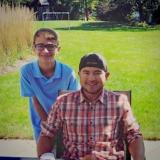
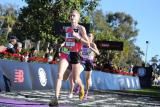
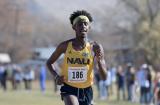
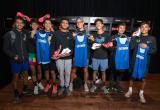








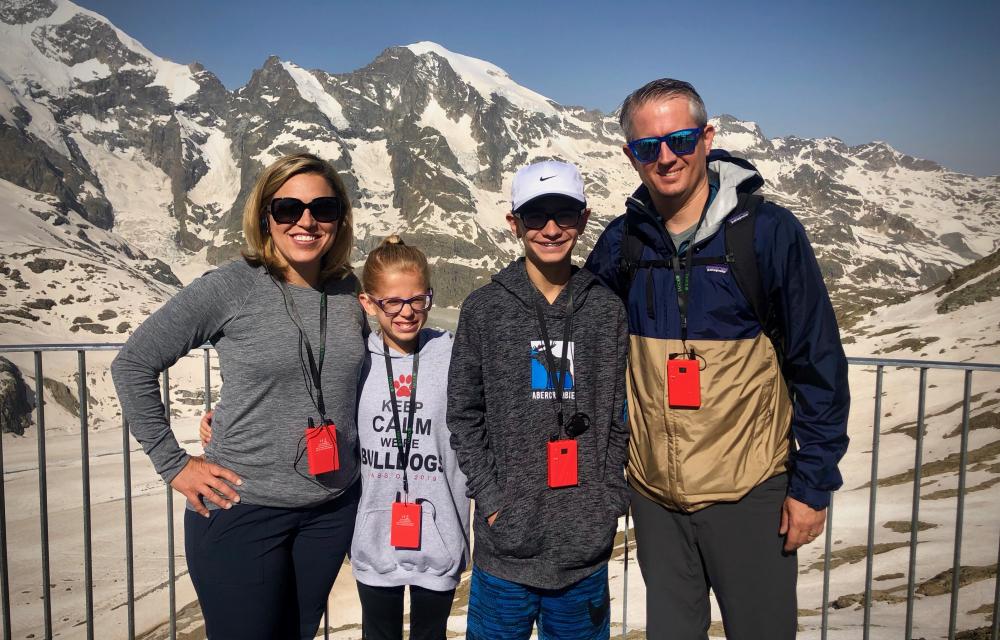
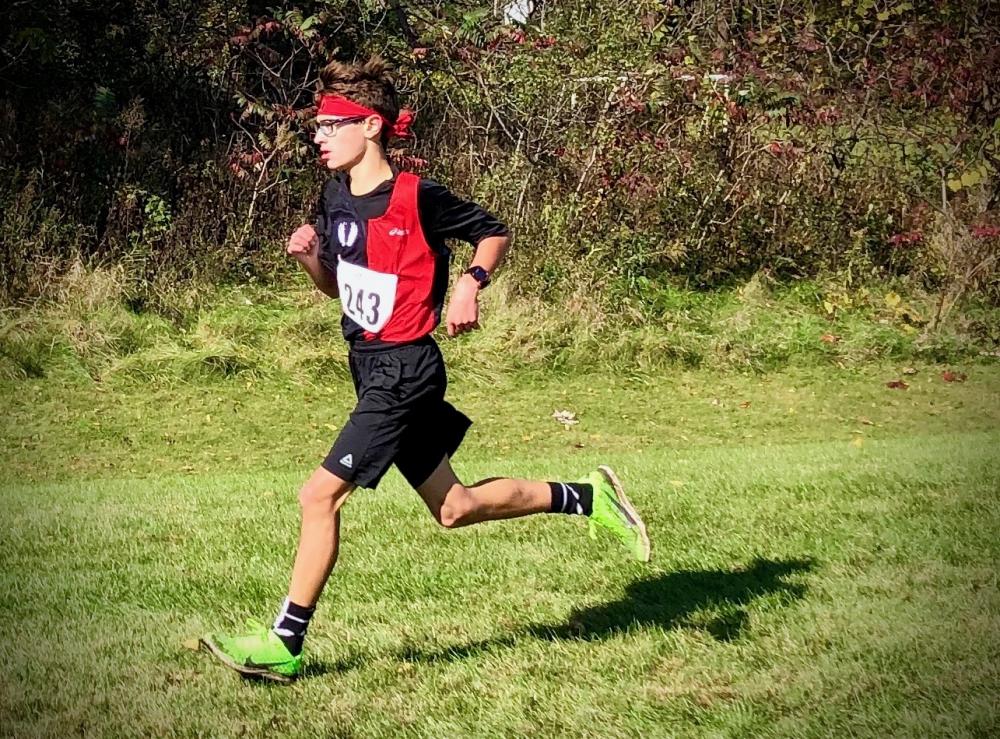
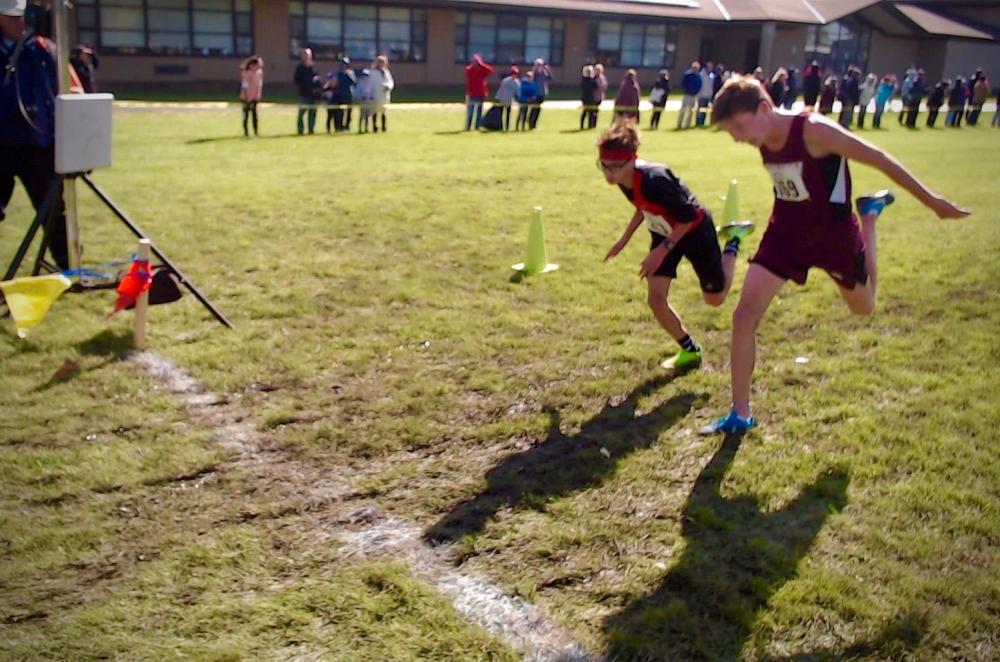
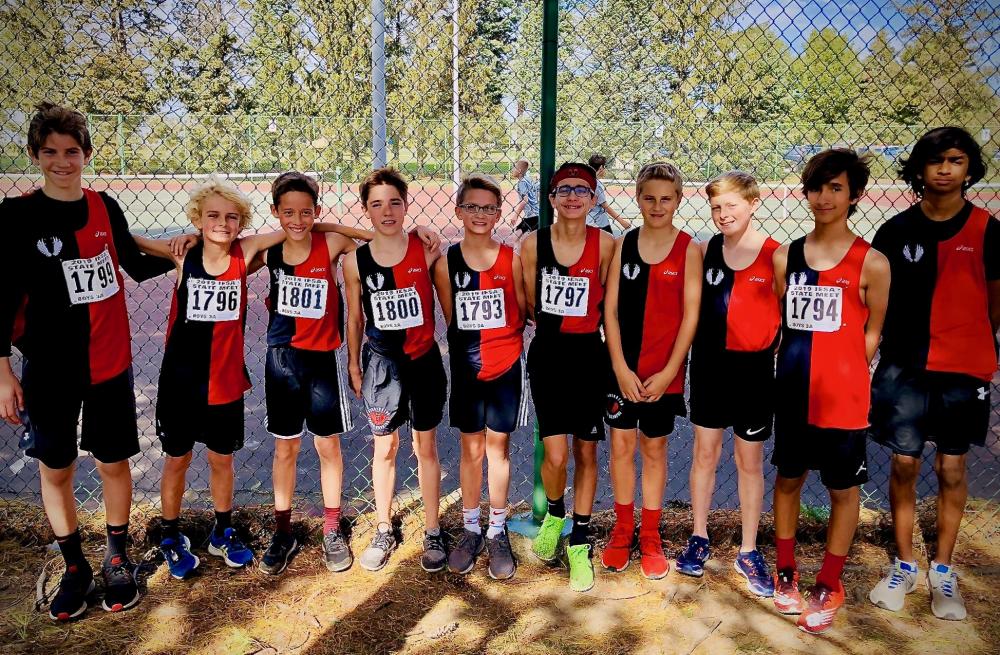

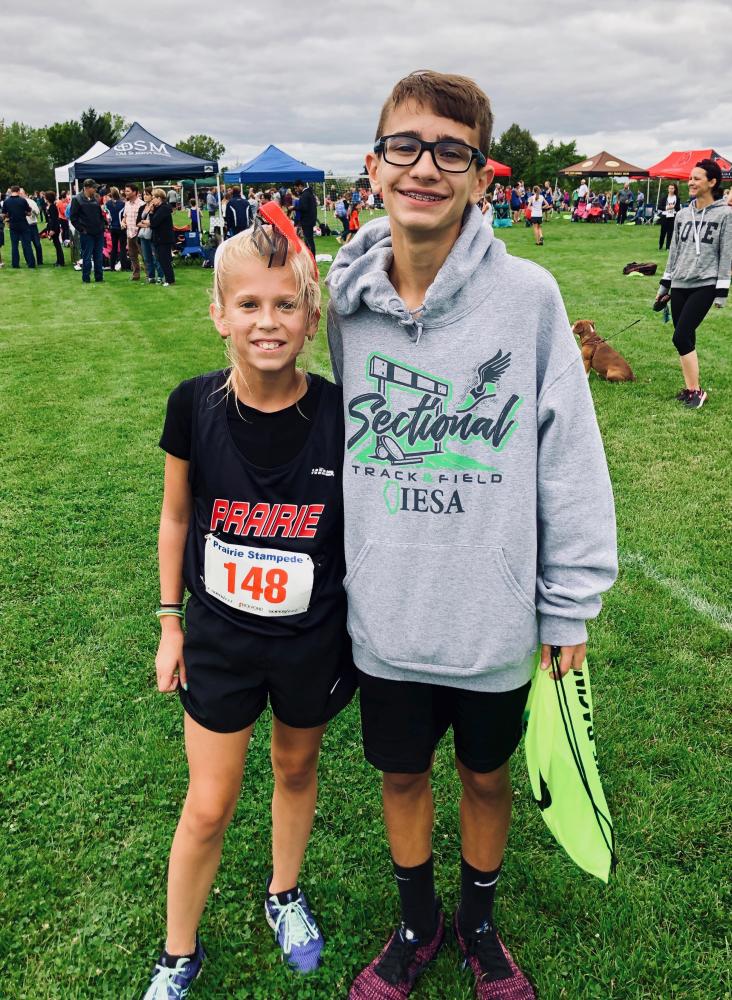 And then you realize that every time Max runs — whenever he accelerates across a field or sprints to the finish — the red blood cells ferrying oxygen to every straining muscle in his body, the ones rising in his cheeks and thrumming through his heart, those were made by Dylan’s bone marrow.
And then you realize that every time Max runs — whenever he accelerates across a field or sprints to the finish — the red blood cells ferrying oxygen to every straining muscle in his body, the ones rising in his cheeks and thrumming through his heart, those were made by Dylan’s bone marrow.